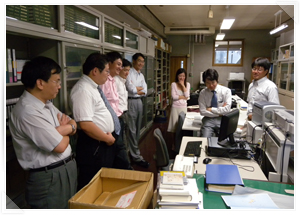
The origins of many of Japan’s traditional mingu can be traced directly or indirectly to Chinese influence, if not to introduction from China. This project will compare Japanese mingu with those of China and Korea from the perspectives of folklore studies, archeology, cultural anthropology, and migration studies, and will seek to determine synchronically what they have in common and how they differ.
As subjects of study, we envisage two areas: mingu associated with life (artifacts related to everyday living), and mingu associated with death (artifacts related to burial and grave systems, consoling the spirits of the dead, etc.). The research will center on the prewar Attic Museum collection; we will undertake a comparative study between China/Korea and Japan from a material culture perspective, focusing on changes that have occurred since the collection was made.
| Name | Specialty | Affiliation | |
|---|---|---|---|
| PL | SUNAMI Soichiro | Folklore | Gangoji institute for research of cultural property |
| DL | OGUMA Makoto | Folklore | Kanagawa University |
| PM | CAI Wen Gao | Folklore | Kokugakuin University |
| PM | HE Bin | Folklore | Tokyo Metropolitan University |
| PM | KUTSUKI Ryo | Study of Material Culture Historic archaeology |
Chiba University of Commerce |
| PM | MAKIBAYASHI Keisuke | Archeology | Research Center of Ancient East Asian Iron Culture |
| PM | NAKAO Norihito | The study of Chinese Mingu | Tenri University Sankokan Museum |
| PM | OTA Shinpei | Social and cultural anthropology | National Museum of Ethnology |
| PM | SERIZAWA Satohiro | Cultural anthropology | Nara University |
| PM | SHIGA Ichiko | Cultural anthropology | Ibaraki Christian University |
| PM | SUZUKI Fumiko | Cultural anthropology | Bukkyo University |
- PL
- -Project leader
- DL
- -Deputy project leader
- PM
- -Project member
